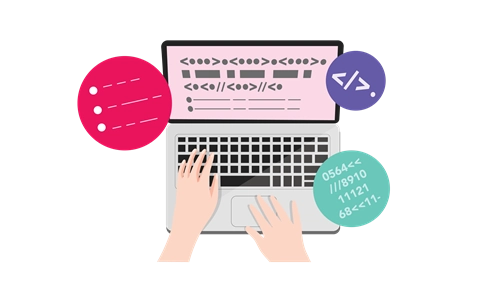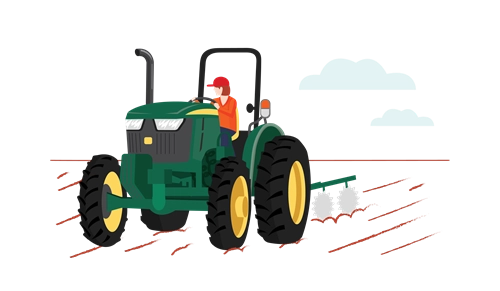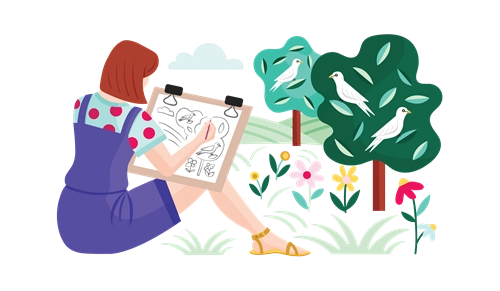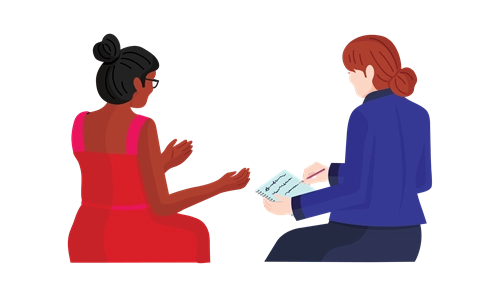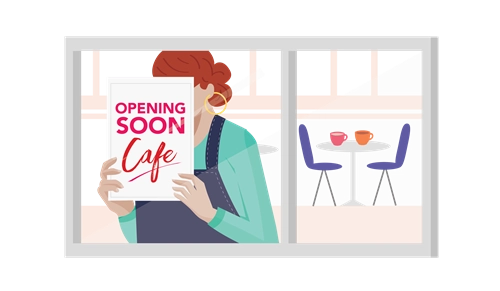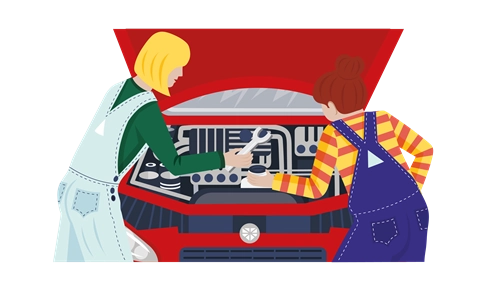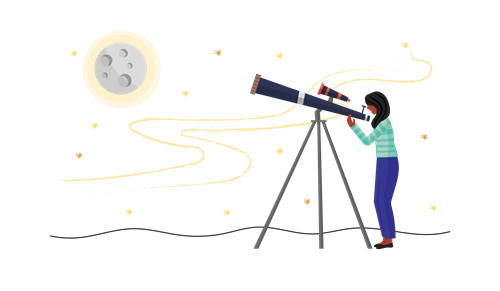-
Curriculum alignment
Mathematics
AC9M7A01 – recognise and use variables to represent everyday formulas algebraically and substitute values into formulas to determine an unknown.
AC9M7A04 – describe relationships between variables represented in graphs of functions from authentic data.
Digital Technologies
AC9TDI8P05 – design algorithms involving nested control structures and represent them using flowcharts and pseudocode.
AC9TDI8P06 – trace algorithms to predict output for a given input and to identify errors.
Design and Technologies
AC9TDE8K03 – analyse how force, motion and energy are used to manipulate and control engineered systems.
AC9TDE8P01 – analyse needs or opportunities for designing, and investigate and select materials, components, tools, equipment and processes to create designed solutions.
AC9TDE8P03 – select, justify and use suitable materials, components, tools, equipment, skills and processes to safely make designed solutions.
Science
AC9S7U04 – investigate and represent balanced and unbalanced forces, including gravitational force, acting on objects, and relate changes in an object’s motion to its mass and the magnitude and direction of forces acting on it.
AC9S7I01 – develop investigable questions, reasoned predictions and hypotheses to explore scientific models, identify patterns and test relationships.
AC9S7I02 – plan and conduct reproducible investigations to answer questions and test hypotheses, including identifying variables and assumptions and, as appropriate, recognising and managing risks, considering ethical issues and recognising key considerations regarding heritage sites and artefacts on Country/Place.
AC9S7I03 – select and use equipment to generate and record data with precision, using digital tools as appropriate.
AC9S7I04 – select and construct appropriate representations, including tables, graphs, models and mathematical relationships, to organise and process data and information.
AC9S7I05 – analyse data and information to describe patterns, trends and relationships and identify anomalies.
- S
- T
- E
- M
Sphero slalom
Years 5 and 6
Learning hook
As a class, watch this video of Jessica Fox, Australian world and Olympic champion slalom canoeist. See if you can work out the rules of the event, and how a winner is determined. Students can do further research to find out what strategies competitors use to win.
Explain that slalom derives from the Norwegian word slalåm, meaning ‘sloping track’. It describes an event in which competitors must zigzag around obstacles. Another example is slalom skiing in which downhill skiers must clear a series of gates by skiing around them.
Ask students questions about slalom courses. Have they seen a slalom course? Have they tried to ski a slalom?
Students can research different slalom sports and then share their findings with the class. Ask questions such as, what do all the sports have in common, and how are they different? As you discuss these, draw students’ attention to interactions between the motion of the competitor, their mass and the forces acting on them.
Jessica Fox - Canoe Slalom
Girls in focus
Biased views of girls and women are often present in examples selected in STEM learning. By ensuring girls are shown in a range of activities and pursuits, such as being involved in extreme sports, teachers can reduce bias in teaching materials.
Learning input
Winning a slalom race requires competitors to maximise their speed on both the straight parts of the course, and the turns. However, taking a turn at speed can lead to a loss of control! Students can explore these factors by developing an understanding of speed and then considering the unbalanced forces affecting motion when they stop, start or change direction.
Students can develop an understanding of speed and friction using Sphero. If students haven’t used Sphero before, provide time for them to get familiar with the robot and how to code it. See the Resources section for more information on getting started with Sphero.
Students can use Sphero to explore the relationship between distance, time and speed by coding Sphero to move forward at different speeds for a set duration. They can then measure how far Sphero travels. Discuss with students how to keep the test fair, and how they should display the data collected. What data representation best shows the relationship between speed, distance and time?
Introduce a symbolic representation of the relationship and compare theoretical results with the students’ data. Are there differences? Why?
Girls in focus
Some students may have had less exposure to coding robots in prior learning. Consider providing additional opportunities to play with the robots and experiment with code, such as by holding lunchtime or after-school sessions. This will build confidence in using the technology prior to engaging in classroom learning opportunities.
Learning construction
Set up a slalom course outside using cones for students to run around. Make courses of different distances and with different spacing between cones, and then have students race each course. Discuss with students the best equipment to use to measure the distance covered and time taken.
Before measuring the timing or the course distance, discuss with students how to ensure measurements are reproducible and precise. For example, should you measure from cone to cone to find the shortest possible distance to complete the course?
After completing the races, discuss the strategies students used to run each course as quickly as possible. For example, they can consider how closely they ran to the cones, and whether they sped up or slowed down to complete each turn. Ask students, did different courses require different strategies?
Back in the classroom, ask students to calculate the speed with which they completed each course. They can aggregate their data to see if there were any relationships between competitor speed, the distance or design of the course.
Girls in focus
When comparing data, avoid the temptation to classify students according to gender as this may alienate some students or perpetuate stereotypes. Instead, aggregate all student data and focus on course variables and specific strategies used to complete the course quickly.
Students can hypothesise which factors make the most impact on how quickly they can run a course. Ask students, are there any other factors they haven’t investigated which would have an impact?
Learning input
To understand the effect of friction, students can work in small groups to design an experiment to test the effect of different surfaces, such as grass, carpet or tiles, on Sphero’s speed. If available, they can also use different Sphero covers to explore how the different covers interact with different surfaces.
As students design their experiment, discuss the advantages of coding rather than driving Sphero when conducting the tests. Which approach is more reliable?
Girls in focus
To ensure all students have opportunities to develop coding skills when working with Sphero, ask students to design their algorithms individually, then compare their code before deciding on the best approach for programming Sphero.
Students can write a short report detailing their aim, hypothesis, method, results and conclusions. When explaining their results, they should describe motion in terms of balanced and unbalanced forces.
Learning construction
Students can now apply their understanding of slalom races and forces to design a Sphero slalom course using recycled materials. Working in small groups, they should consider how to make the course challenging by taking advantage of unbalanced forces. Examples might include sloping the course, using different materials for the track, or designing turns to be tight.
Before building their course, students should create a sketch and annotate it to show how they’ve considered the forces involved.
Once they’ve built the course, students can race Sphero through the course using drive mode. They should record their times over a number of trials.
Girls in focus
Some students may be less confident when building the course. Consider providing explicit instruction in the tools and materials available and how to use them in construction. Depending on prior construction experience, some students may also need additional time to complete their project.
Students can then work individually to code Sphero to complete the course. They can experiment with this simple code to get started .
For an added challenge, consider including a collision limit. As students develop their code, encourage them to consider the best way to manage Sphero’s movement on the straight sections and the turns. They can experiment with different code segments to then maximise Sphero’s speed through the course.
They can also include code to record:
- the number of collisions
- distance travelled
- time taken to complete the course (consider adding a motion trigger like picking up Sphero and gently shaking it).
Students should compare the speed at which they each complete the course with their Sphero and analyse the code for the fastest performances to identify the strategies used. They can then modify their code to see if they can improve their time.
Students can document their process by filming their Sphero completing the course and providing a video of their code in action.
Further learning
Show students this video of Sphero carriages, then challenge students to design their own carriage with Sphero as the engine. Students should sketch their design and then use recycled materials to build the carriage. Students can then test the carriage and make adjustments for it to race around a course.
Sphero Race
-
Rubric
Assessment
Criteria
Beginning
Achieved
Exceeded
Knowledge and Understanding of the factors involved in slaloms.
Briefly able to discuss elements required in a slalom.
Gathered a variety of information about slaloms and able to discuss at length.
Gathered extensive information about slaloms. Detailed descriptions of elements involved in a successful slalom.
Relationship of Time, Distance and Speed.
Some understanding of connection and pattern.
Sound understanding of the relationship of time, speed and distance.
Thorough understanding of the relationship of time, speed and distance.
Technology and Equipment for Activities.
Able to operate technology and equipment with assistance.
Confidently operated technology and equipment to obtain data.
Competently and accurately operated technology and equipment to obtain data.
Implement digital solutions as simple visual programs
Had difficulty in programming Sphero.
Confidently and capably programmed Sphero
Competently and expertly transmitted data by programming Sphero.
Collection of Data
Required assistance to design and create tables for data.
Created tables and charts for data collection.
Competently created tables and charts for data collection.
Construction of carriage
Designed and made a simple carriage.
Successfully designed and made a carriage which was driven by Sphero.
Creatively and successfully designed and made a carriage which was driven by Sphero.
Creativity, problem-solving and collaboration.
Demonstrated some creativity, problem-solving and collaboration throughout tasks.
Demonstrated good creativity, problem-solving and collaboration throughout tasks.
Demonstrated excellent creativity, problem-solving and collaboration throughout tasks.
Download Lesson
